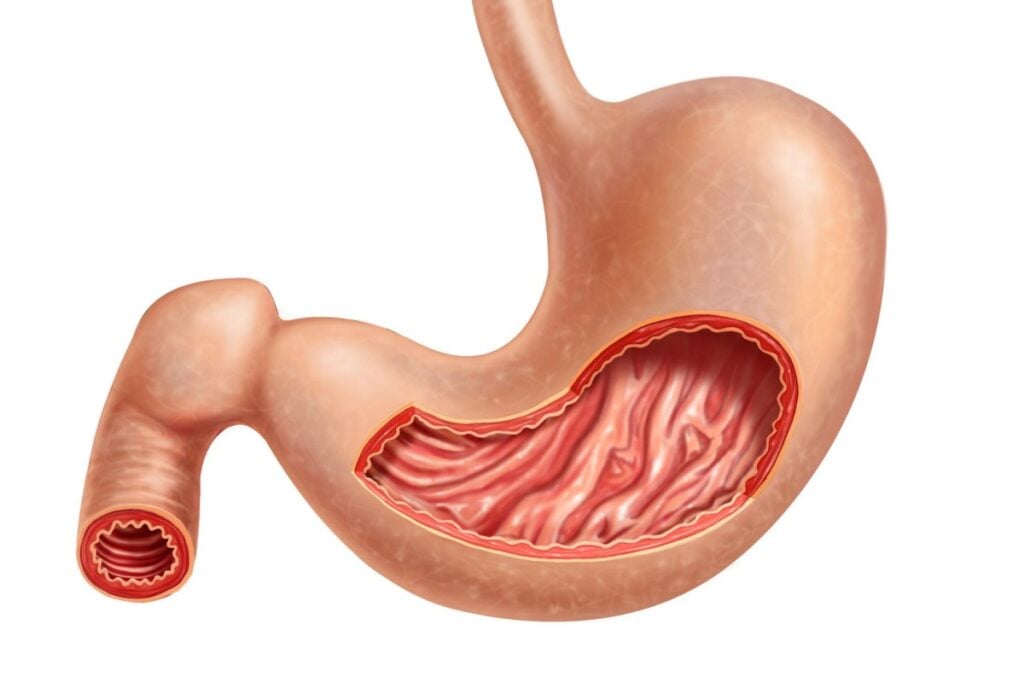You’ve probably heard of gastric bypass while you’re looking into bariatric surgery, but have you ever heard of the mini gastric bypass? If you still haven’t and you’re looking for a possible bariatric procedure for you, then this post is for you!
Discover everything you need to know about the mini gastric bypass – from its surgical procedure to its effectiveness in treating obesity and how it differs from the Roux-en-Y. Expand your bariatric options to take a crucial step forward in your weight loss journey.
What is a mini gastric bypass?
The mini gastric bypass, sometimes referred to as the omega loop or one anastomosis, is a simplified version of the Roux-en-Y gastric bypass (RYGB). This technique was created to shorten the procedure while ensuring patients receive the same results as the RYGB.
Additionally, this procedure combines malabsorption and restriction techniques by modifying how the stomach and small intestine absorb and process food. As a result, individuals with obesity can lose weight that is typically difficult to shed through conventional diet and exercise.
How it works
Similar to the Roux-en-Y, the mini gastric bypass reduces the size of the patient’s stomach pouch to limit their food intake. However, as opposed to the two connections in the gastric bypass, this procedure involves only one connection between the reduced stomach and small intestine, making the procedure less complicated and shortening the surgery time.
Moreover, the re-routing part is designed to bypass the duodenum and jejunum, where the majority of nutrients and water are absorbed. This results in patients feeling full faster and consuming less food, ultimately leading to significant weight loss.
Mini Gastric Bypass Procedure

The procedure starts with patients being administered with general anesthesia. Five small incisions are made in the abdomen where the laparoscope and other surgical instruments are inserted.
The top of the stomach will then be stapled together to create two separate sections. The smaller section, which will be reshaped into a tube, will function as the new stomach, while the larger section will remain in the body to produce digestive juices and be unutilized.
Once the initial step is complete, the surgeon will move on to rerouting a portion of the small intestine, known as the jejunum, to the new pouch. Unlike the Roux-en-Y procedure, which requires rerouting a significant amount of the small intestine, this modified technique requires less rerouting. This means that the surgery can be completed more quickly and with less disruption to the digestive system.
Candidates for Mini Gastric Bypass
If you have been struggling with obesity and have tried various diets and exercise routines without success, maybe it’s time to consider getting a bariatric procedure. The mini gastric bypass is one option available for weight loss surgery, but it is important to note that not everyone is eligible for it.
So how will you qualify for this procedure? Come check out the qualifications below:
- BMI of 40 or greater
- BMI of 35 or greater and with weight-related conditions such as type II diabetes or high blood pressure
- Over 18 years of age
- Previously attempted diet and exercise but with no or little results
If you’re considering this procedure, it’s important to consult your healthcare provider first before making any decisions. It’s especially important to seek out a bariatric surgeon who is familiar with this procedure and can offer you guidance.
Despite its benefits, most bariatric surgeons still prefer gastric bypass since it has been around and studied for longer. Ultimately, the decision to undergo any weight loss procedure should be consulted with your doctor so they can help you determine the best course of action for your case.
Difference Between Mini and Traditional Gastric Bypass
While Roux-en-Y has been around for years, the newer mini gastric bypass has gained popularity in recent years. Both procedures have their own benefits and drawbacks, and it’s important to understand the differences between the two before deciding which one is right for you.
Operating time
The operating time between the two procedures is really worth noting. Due to the complexity of the Roux-en-Y, this surgery can take between 2 to 4 hours to complete.
On the other hand, the mini gastric bypass is quicker and can take the surgeon between 1 to 1.5 hours to perform.
Reversal
The extensive modification of the traditional gastric bypass differs significantly from its mini version. While reversal is technically possible, it would be far more time-consuming and risky for the former when compared to the mini gastric bypass.
Since no part of the stomach has been completely removed during the mini gastric bypass procedure, the reversal process is relatively easier.
Cost
Roux-en-Y costs a little more than the mini gastric bypass. On average, the gastric bypass can cost patients $23,000, whereas the latter is around $20,000. It’s also worth noting that there is a discrepancy between the insurance availability for the two procedures.
Generally, most doctors recommend gastric bypass to their patients, so insurance typically covers this bariatric procedure. However, the mini version of the gastric bypass is often not covered by insurance, that’s why it’s advisable to consider your finances if you’re considering this treatment carefully.
Complication
Complications are generally the same between the two, which can range in severity and vary from case to case. Some complications that you should be aware of include:
- hernias at the site of the incision
- ulcers
- infection
- staple line leaks
- strictures
- pulmonary embolism
It is important to seek medical attention if you experience any symptoms that hinder your normal functioning post-procedure. Please contact your healthcare provider for further guidance.
Conclusion

The mini gastric bypass is a viable bariatric surgery option for individuals looking to treat obesity. With its simplified procedure and effectiveness in weight loss, it is a valuable addition to the range of bariatric options available.
By understanding the differences between the two gastric bypass, patients can make better decisions that will affect their weight loss journey. It is important to consult with a healthcare professional first to determine the best course of action for your case.
With the mini gastric bypass, individuals can take a crucial step forward in achieving their weight loss goals and improving their overall health.

